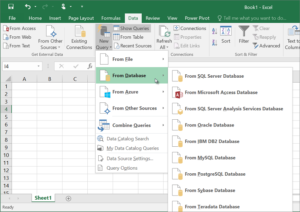
The one certainty in business software and services is that there will always be more acronyms. At the moment, though, there's more to the sector than just another jargon explosion: we're moving towards a new way of looking at IT, one that applies best-practice business processes to any company—however small it may be, and however fast it may grow.
This sounds good, but wading through websites full of perky lists of generic benefits can leave many IT managers still wondering exactly what they’re being sold.
For this feature we spoke to a bunch of major vendors—SAP, Sage, Microsoft, and IBM—about the new breed of business services they offer. We'll look at benefits of buying IT as a service, what working in the cloud really means, and how to move towards fully integrated business management, now more commonly known as enterprise resource planning, or ERP. We will mostly focus on SMEs (small and medium sized enterprises or businesses), but much of what’s discussed here is also easily applicable to larger organisations that haven’t yet moved to modern business software.
The decisions you need to make before choosing a solution will depend considerably on the nature of your business, but a good starting point is to compare the basic IT functions with which most of us are familiar to the new approaches on offer.

Beyond Excel
If PowerPoint is the universal language businesses use to talk to one another, their internal monologue is Excel. There’s nothing you can’t shovel into Microsoft’s core app, which millions of organisations use as everything from an accounts package to a stock database. However, it has its dark side.
Writing for Forbes in 2013, analyst Tim Worstall concluded that “Excel might be the most dangerous software on the planet.” The problem, he wrote, is that data has “become so complex and it’s handled in such a slapdash manner that no one is really on top of it any more.”
Even in the highly technical environment of investment banking, executives were found to be operating “through a series of Excel spreadsheets which had to be completed manually, by copying and pasting data from one to another,” a clear recipe for error and disaster. Bad news for international finance, but equally undesirable for a design agency or a flower shop.

There’s a better way, neatly expressed by a computer science term—“single version of truth," sometimes also known as a single point or source of truth. This means keeping data in one place, updated in real time, so that no matter where in the system it’s accessed from, users will get the same answer.
That’s not possible with the kind of ad-hoc IT that most small businesses rely on. We heard the same story again and again from people who work with SMEs—spreadsheets aren’t enough. Even if nothing goes wrong, information gets “siloed,” entered in one context but unavailable in others. Time is wasted duplicating effort, and opportunities are missed because data just sits there instead of actively contributing to decision-making.
It’s one thing knowing that bigger rivals with deeper pockets are doing things better than you, but how can you compete? Well, you may well now be able to acquire some software that's cleverer than Excel, almost off the shelf, and migrate your systems to it faster than you think.
The key to this new generation of digital business management is in that newfangled suffix “as a service.” Software as a service (SaaS), infrastructure as a service (IaaS), and platform as a service (PaaS) are interlocking buzzwords which inform IT not as a costly, complex arm of an organisation, but as an almost ready-made package with a monthly or annual fee. And thanks to the cloud, it needn’t even involve any server hardware or maintenance on the premises.
Office in the cloud
Moving beyond siloed spreadsheets and documents, the first obvious port of call is one of the online office productivity suites. These can begin to address major roadblocks for SMEs, such as real-time collaboration and device independence.

As Alex Faupel, Microsoft UK’s SMB customer lead, tells Ars: “Any small business is time-poor, with individuals trying to do multiple jobs. They need to collaborate and communicate.” That means changing the way users access software and files, a simple idea with big consequences.
Rather than having everyone sitting at a work PC running its own word processor, passing documents back and forth when required, or accessing them from a server, the new model keeps documents in the cloud, accessible in real time to multiple users at once from anywhere.
Most big office productivity suites now have Web app versions, backed by copious quantities of cloud storage and other useful vendor-provided features, and are sold as an ongoing subscription. So your users can jump onto any device with a browser, whether (with some security caveats) it’s the company’s hardware or their own. Corporates struggled with this for years; now it’s a basic feature.
Once you take it for granted that everything is available everywhere—with granular control, of course, over who can see what—it’s natural to start thinking about how you can use your organisation’s data in completely new ways.
reader comments
180